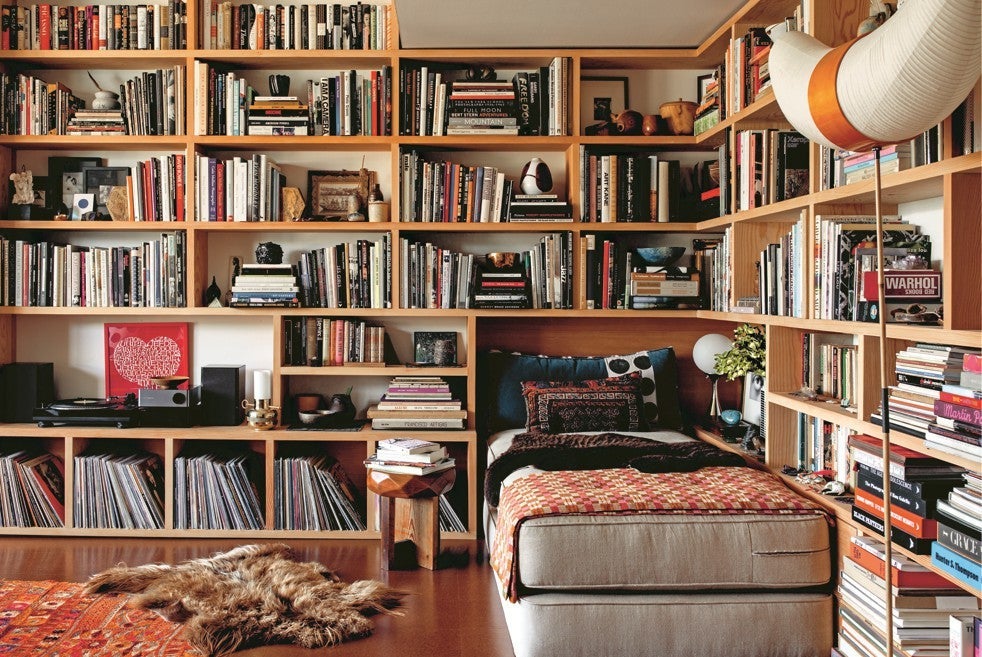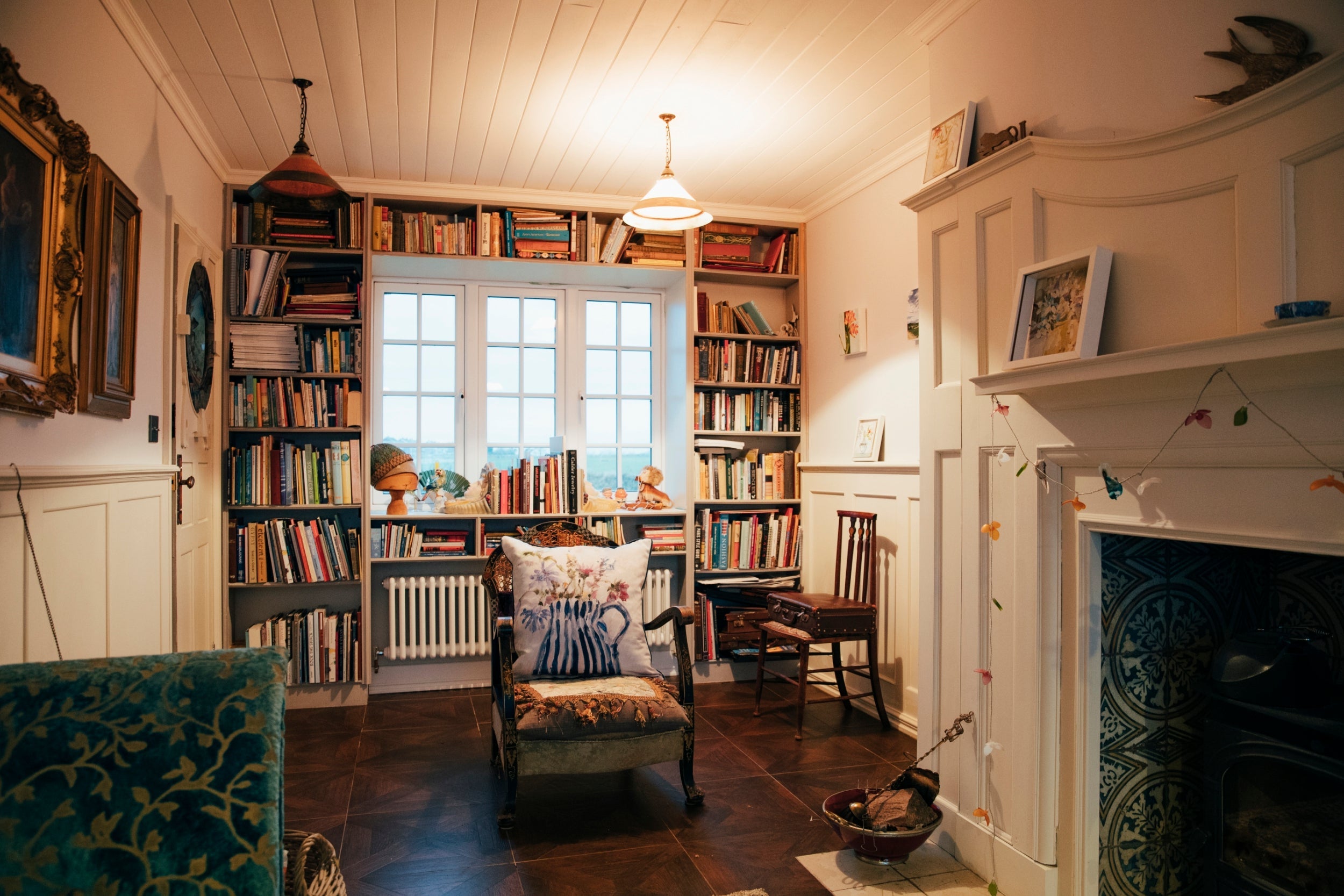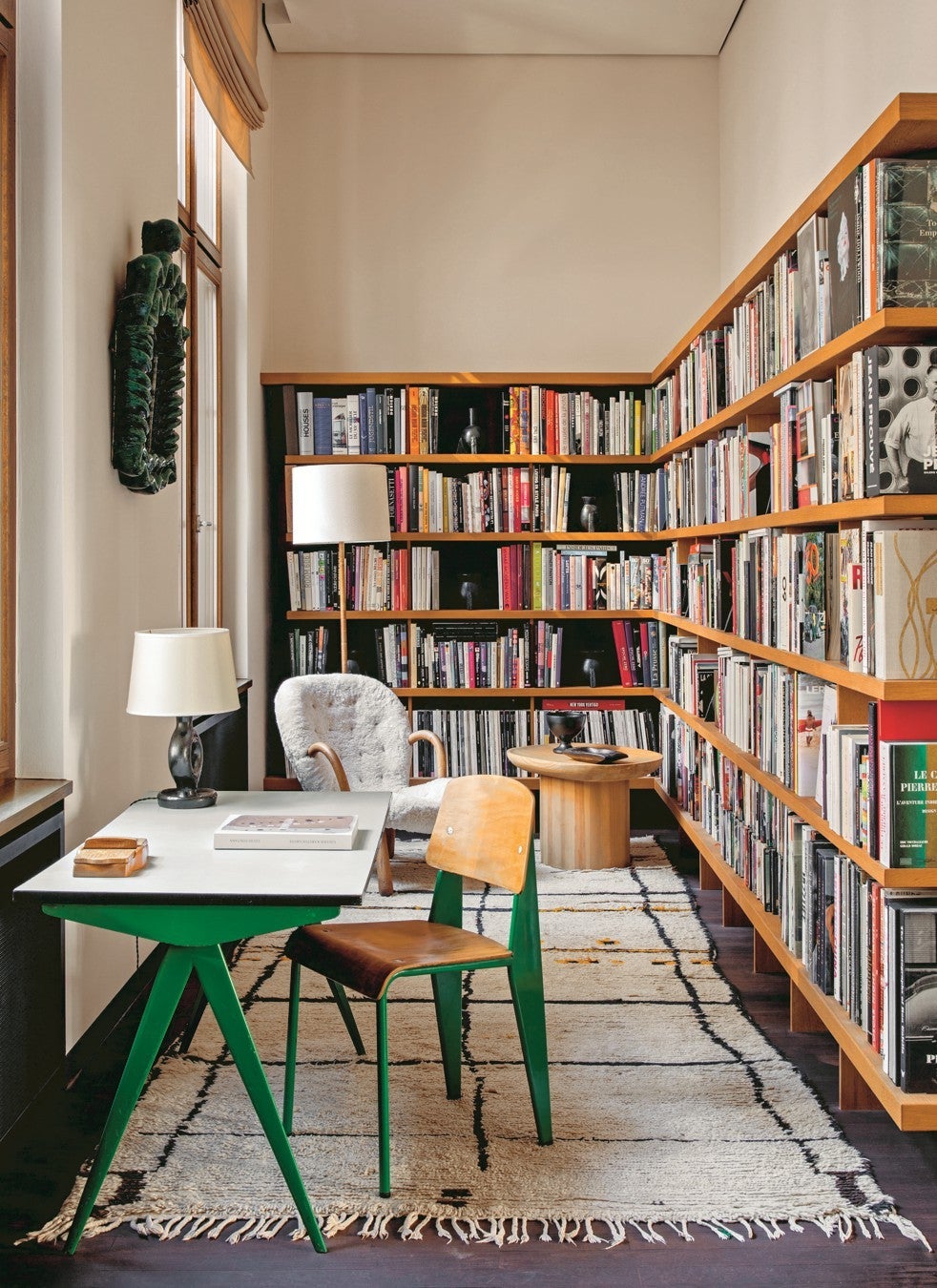Why beautiful bookcases are important again
There was a point when the demise of the physical book was seen as an inevitability. However, books have since made a comeback, with shelves marking the background of many a zoom conversation. Rebecca Powers explores the importance of a good bookcase

Bookshelves are having a moment.
Not long ago, their epitaph was being written. Ikea’s redesign of its Billy unit to accommodate objects other than books was cited as evidence that we had turned the page on possessing print.
Now, that story has a sequel.
Self-isolation has people rediscovering the value of having hardbacks at home. In addition, television networks’ shift to interviews via Skype, rather than in a studio, is revealing the bookcase backdrops of pundits, news anchors and celebrities at home. That domestic exposure sparked a social media conversation about literary decor.
Room Rater on Twitter, for example, offers regular, and often snarky, critiques of shelves in the rooms visible behind various talking heads.
Room Rater dishes compliments, too. “Just enough clutter,” one tweet reads. “Looks real.”
Domestic libraries are first and foremost about books. But the displays also lend an inviting graphic element to decor. Just please, designers say, don’t arrange books page-side out. That affectation makes no sense. However, please do pair books with objects, art, photographs and ephemera.
The book Bibliostyle: How We Live at Home with Books by Nina Freudenberger showcases enviable bookshelves around the world. Photos of collections and the rooms they inhabit are accompanied by interviews with their well read and often notable owners.
The volumes pictured here make you want to read – and display – more books.
Bibliostyle features more than 250 colour photographs of 35 homes in 15 cities and eight countries. Residences include the homes of writers, illustrators, designers, editors and collectors – readers all.
Highlighted rooms range from clean contemporary to overstuffed classic. Shelves showcase rare editions, fairy tales, gardening volumes, coffee-table tomes and even vintage comic books. There are books in closets and bedside stacks, books on landings and books lining dining room walls. They’re arranged by colour, by author, by language, by genre or not organised at all.
“People live in different ways,” says Freudenberger, a Los Angeles-based interior designer. “I think to not have books, it’s a red flag. It makes me a little nervous. Books have something incredible. The smell. They’re an object. There’s a legacy.”
True to her Rhode Island School of Design education in architecture, however, Freudenberger does appreciate creative order.
“I don’t think you have to jam every shelf full,” she says. “Empty space is important.”
I arrange the books by genre, and very importantly, by colour. Grouping the books by colour gives visual order and quiet
She suggests using bookends for visual breaks and is fond of natural wood shelving, which, she says, is warm and accentuates the books.
Bloomfield Hills, Michigan interior designer Dayna Flory Rasschaert, of Dayna Flory Interiors, says: “Books can be a tricky item to visually conquer. Trust me, there is no better feeling than the warmth of being surrounded by books. However, if not properly allocated, they can become visually overwhelming and very busy to the eye.”
She, like many designers, finds a crazy quilt of paperbacks and book jackets visually jarring. Some will remove paper jackets or cover books with paper or custom bindings for a more calming uniformity.
“I arrange the books by genre, and very importantly, by colour,” she says. “Grouping the books by colour gives visual order and quiet.”
Rasschaert says bookcases work in any hue.
“Black is one of my personal favourites,” she says.
New York interior designer Celerie Kemble, author of the book To Your Taste, says custom built-in bookcases are ideal and are especially appealing when they surround windows.

Whatever the display, she writes, “a well-used bookcase offers heft, stability, backbone, character and a sense of life lived”.
The libraries featured in Bibliostyle are stunning examples of the substance that books lend – intellectually, aesthetically and emotionally.
Nashville-based poet and author Caroline Randall Williams, whose heirloom cookbook collection is featured, speaks to the emotional value.
“If the house were burning,” she says, “I’d probably rush to save The New World Encyclopedia of Cooking, purely because Nana pressed fresh flowers into its pages, and I would be heartbroken if I failed to preserve them.”
Concern for an orderly display is often less important than the pleasure of the collection itself. Still, the collectors’ homes in Bibliostyle make up an inspiring portfolio of interior and architectural design. There are high-ceilinged European apartments, a poured-concrete modern in Mexico City and a wonderfully layered 19th-century New York farmhouse with windows framing Hudson Valley views like colour plates in a vintage book.
He keeps many of his volumes in a reading nook, as he calls it, where there’s a daybed for reading and a turntable for listening
The Paris dining room of textile designer Carolina Irving has custom bookshelves crammed with global titles. The result, Freudenberger observes, is “a colourful cacophony on the shelves, a warm, natural wallpaper with snapshots of Irving’s family, bits of pottery and sculpture”.
More minimalist homes also are depicted. Emmanuel de Bayser, a proprietor of concept stores in Paris and Berlin who says he doesn’t understand people who don’t have books, has a collection tailored to fit the mid-century modern decor of his Berlin apartment.
“To be honest, in Paris, I went to find several clothbound books in specific colours,” de Bayser is quoted as saying. “The priority was the looks. But one is a special edition of [the poet Rainer Maria] Rilke.

“I happen to really like Rilke; it made sense, and it was a beautiful green cover.“
The Los Angeles home of Roman Alonso, one of the founders of Commune Design, manages to maintain restraint while also being book heavy. He keeps many of his volumes in a reading nook, as he calls it, where there’s a daybed for reading and a turntable for listening.
Alonso says his books “are like old friends to me, and I miss them when I don’t visit them”.
Many of the featured book lovers have arranged their furnishings to accommodate reading.
After visiting the homes of the featured aficionados, Freudenberger reached her own conclusion about the elements of a really good reading chair. Being near natural light is nice, she says, and she likes the idea of proximity to the kitchen.
The most inviting spot among those pictured may be in a vignette from the Brooklyn brownstone of writer Kathleen Hackett and artist Stephen Antonson.
A chair, known as “The Chair”, with an appealingly broken-in sheepskin, is the most coveted reading spot in the house.
It is, of course, beside a bookshelf.
Fellow Brooklynite, the novelist Jonathan Safran Foer, also says books and reading are about place.
“I’m really attached to the idea that different spaces, whether physical or interpersonal, will create different thoughts and experiences,” Foer says. “Having a comfortable chair, good light – these things do put you into a state of mind to better absorb ideas.“
© Washington Post
Join our commenting forum
Join thought-provoking conversations, follow other Independent readers and see their replies
Comments
Bookmark popover
Removed from bookmarks